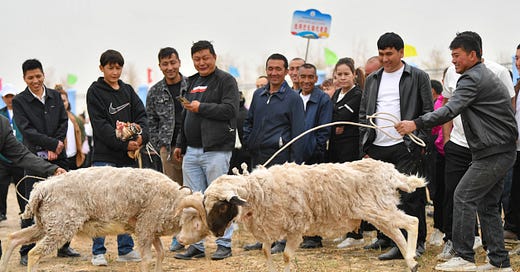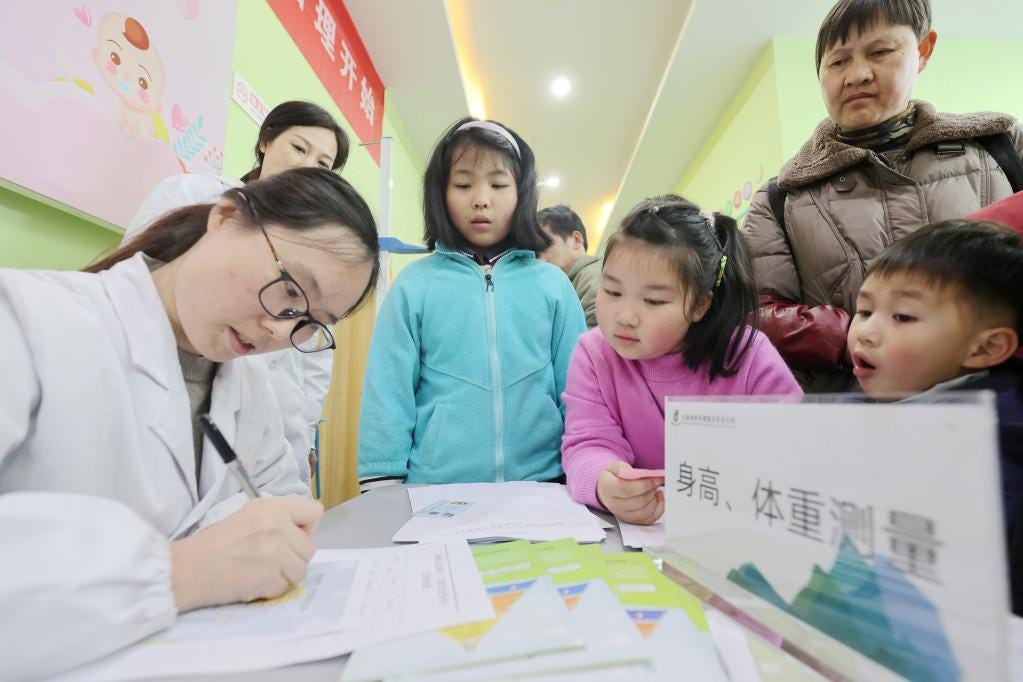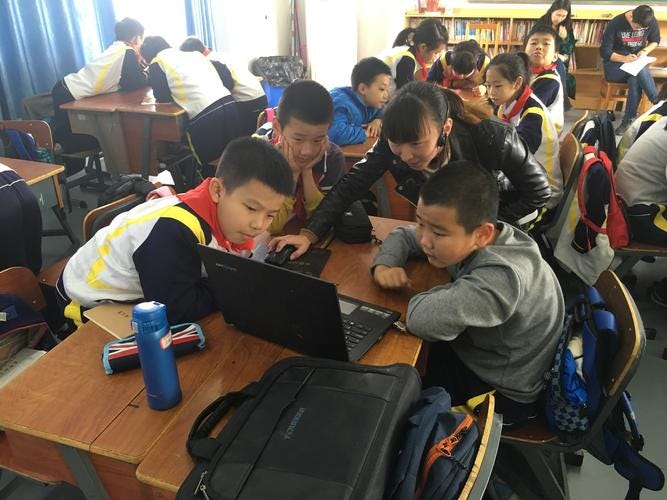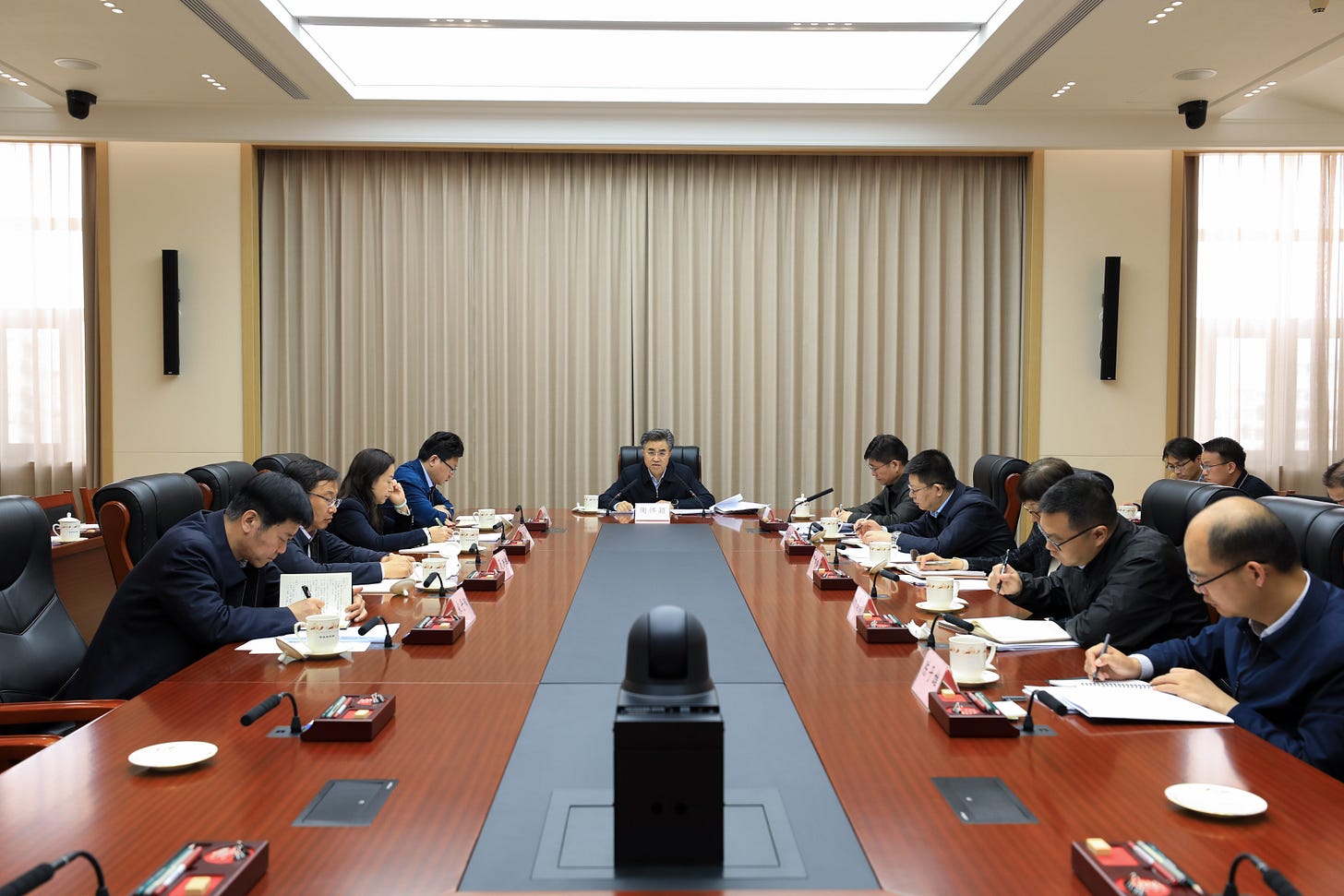The Harvest: This Week in Rural China – Dispatch No. 18 (18 April 2025)
Childhood Obesity, Healthy Villages Initiative, AI's Future in Rural Education, and Special Bonds for Rural Development.
This week, The Harvest brings you a digest of the key developments shaping rural China:
Rural China’s Weight Problem: Childhood Obesity on the Rise.
China’s “Healthy Villages” Initiative Breaks Ground in Jiangsu.
Bridging China’s Digital Divide: Rural Education in the Age of AI.
China Expands Use of Special Bonds to Support Rural Development.
I always welcome your insights, as your feedback helps shape the direction of every dispatch. Please share your thoughts in the comments below or reach me at nathan@thisweekinruralchina.com.
As always, The Harvest remains free for all readers. If you find value in these dispatches and want to support the continued work behind them, consider becoming a free or paid subscriber. Your support helps sustain this project and ensures we can continue publishing consistently.
Now, let’s dive into this week’s stories:
Rural China’s Weight Problem: Childhood Obesity on the Rise
This week, reports from domestic media, including a long-form piece by Xinhua, suggest a shifting public health landscape in rural China: more children are becoming dangerously overweight, and the trend is accelerating.
Across the rural-urban landscape, doctors are reporting a sharp rise in childhood obesity, with medical journals now referring to a growing cohort of so-called “little chubby children”(小胖墩)in domestic medical literature. According to the Capital Institute of Paediatrics, one recent case involved a nine-year-old boy weighing 63kg, with a body mass index over 30, well into the obese category.
The issue is increasingly rural. According to recent projections cited in the report by Xinhua, by 2030, obesity rates among children in rural areas are expected to exceed those in cities. Experts blame shifting habits, greater access to processed food, and lingering traditional beliefs. In some rural households, fatness is still seen as a sign of wealth or robustness. “Many parents still believe a fat child is a healthy one,” says Dr Song Fuying of Beijing Children’s Hospital. “They think the child will slim down as they grow. But that’s often not the case.”
Part of the problem is structural. Rural children now spend long hours studying indoors, with little time or space for movement. Meanwhile, access to smartphones and snack foods has exploded. One paediatric nutritionist described it as “malnourished obesity”—children consuming large amounts of calories but few essential nutrients.
The government has taken note. In 2024, China issued its Guidelines for Weight Management(体重管理指导原则2024年版), warning that if unchecked, childhood obesity could affect nearly a third of all Chinese children by the end of the decade. Local initiatives have followed: Guangxi’s schools must now offer students at least 12 types of food per day(营养配餐指南), and Beijing has introduced new physical education requirements for schools.
Still, there is no easy fix. Cultural habits, economic pressures, and the seductive pull of digital life all compound the issue. As one teacher in Shanxi put it: “They eat too much, move too little—and the heavier they get, the harder it is to start again.”
China’s “Healthy Villages” Initiative Breaks Ground in Jiangsu
This week, Suzhou—a sleek city often synonymous with canals and classical gardens—hosted a launch aimed not at tourists but at transforming the countryside. Under the banner of the 37th National Patriotic Health Month (全国爱国卫生月), the Healthy Villages Construction Initiative (健康乡村建设行动) was officially kicked off, signalling Beijing’s renewed attention to rural wellbeing.
Jointly organised by the National Patriotic Health Office, Jiangsu Provincial Patriotic Health Committee, and the Suzhou Municipal Government, the event marks a fresh chapter in the long-running Healthy China campaign, this time with its sights set on rural villages.
At first glance, the policy speaks the familiar language of Chinese bureaucracy—multi-department coordination, pilot programmes, and action plans. Yet beneath the layers of officialdom lies a real story: the attempt to close China’s long-standing urban-rural health divide. Over the past decade, China’s cities have seen rapid advances in healthcare infrastructure, while rural communities have often relied on overstretched, underqualified village doctors.
The Healthy Villages initiative takes a wide-angle approach, which officials describe as the perspective of “big health, big hygiene” (大卫生、大健康). It clearly defines responsibilities at three levels: individual, societal, and governmental. Families are encouraged to adopt healthier lifestyles and seek out health education. Villages are urged to cultivate local health governance and volunteer networks. Local governments are tasked with distributing medical resources more evenly, strengthening public health services, and building what’s termed a “supportive health environment” (健康支持性环境).
Three campaigns are being rolled out together: Healthy Weight Management (健康体重管理行动), Traditional Chinese Medicine Promotion (中医药健康促进行动), and the headline initiative itself. Each forms part of the broader “Healthy China Action Plan” (健康中国行动), now comprising 18 distinct focus areas.
The government’s target is 2030. By then, it hopes to see markedly improved health literacy in the countryside, higher numbers of licensed rural medical workers, and full coverage of basic healthcare services across all villages.
While implementation will vary by region, the message is clear: the countryside is no longer an afterthought in healthcare. Health is becoming a national mandate—not just in urban hospitals but also in the furthest reaches of rural China.
Bridging China’s Digital Divide: Rural Education in the Age of AI
This week, the Ministry of Education, along with nine other state departments, unveiled a new policy aimed at deepening the digital transformation of its education system. Titled Opinion on Accelerating the Advancement of Education Digitalisation(关于加快推进教育数字化的意见), the document outlines 22 measures across seven categories. While the initiative spans all levels of education, it holds particular significance for rural China, where the gap in resources and access remains stark.
The policy is part of a broader strategic push outlined in the Education Strengthening Plan (2024–2035)(教育强国建设规划纲要2024—2035年). Officials say digitalisation is not simply a technological upgrade but a “deep reform of educational governance, philosophy and teaching models.” Yet, for many rural communities, these changes still feel distant. Connectivity remains inconsistent, teaching quality is uneven, and digital literacy among students and teachers lags.
To address this, the policy outlines a range of rural-specific strategies. In regions like Ningxia, authorities plan to reconfigure urban and rural education resource distribution. This includes building “cloud schools” (云端学校), deploying “shared teachers” (共享教师), and developing “digital curricula” (数字课程) that can be accessed remotely. These efforts are designed to allow students in poorer or geographically isolated areas to benefit from the expertise and content of top-tier institutions.
The initiative also acknowledges the shortfall in trained educators. In response, the government will establish Smart Teaching Research Centres (智慧教研中心), creating a layered network across provinces, cities, counties, and schools. These centres will collect classroom data, support digital lesson planning, and offer real-time training, particularly aimed at helping rural teachers adapt to AI-enhanced teaching environments.
Still, the success of such programmes will depend on execution. While digital platforms can extend reach, they do not substitute for the physical infrastructure and sustained human capital that many rural schools continue to lack. Moreover, a purely top-down rollout of AI in education would deepen dependency on centralised systems and marginalise local voices.
Yet, if implemented thoughtfully, this new wave of digital policy could reshape the landscape of rural learning. The challenge lies in balancing technological ambition with grounded, equitable delivery, so that children in China’s most remote corners aren’t left behind in the race toward the smart classroom.
China Expands Use of Special Bonds to Support Rural Development
In a move to strengthen rural development, China’s Ministry of Agriculture and Rural Affairs (MARA) convened a special meeting last week to discuss expanding the use of special bonds (专项债) in the agricultural and rural sectors. These bonds have become an essential financial tool, mobilising both public and private sector investments to support key farming projects and the broader goal of rural revitalisation.
Led by Tao Huaiying, the Ministry’s chief veterinarian, the meeting focused on enhancing the quality of special bonds to support China’s ongoing rural transformation. Local governments have already raised substantial funds through these bonds, providing significant capital for projects such as rural infrastructure, agricultural modernisation, and the revitalisation of rural economies.
A primary goal discussed was ensuring the strategic deployment of these bonds in areas with the most significant impact. The meeting emphasised the importance of focusing on agricultural infrastructure and rural industry development to maximise the bonds’ potential. “By using these bonds effectively, we can unlock more funding for the rural sector, driving agricultural modernisation and improving the lives of rural citizens,” said Tao Huaiying.
The meeting also urged improved project planning and management, stressing that funded projects be thoroughly vetted for long-term viability and impact. Increased coordination between local agricultural departments and financial bodies will be necessary to ensure efficient use of funds and measurable results.
This push for more significant agricultural investment is part of a broader national effort to modernise rural areas, which have faced slower development than urban centres. Special bonds have been instrumental in bridging this gap, and the government is committed to ensuring they foster sustainable, equitable growth. In particular, the Ministry aims to align this financial strategy with the overarching goals set out in the Rural Revitalisation Strategy, which seeks to rejuvenate rural communities by improving infrastructure, enhancing local industries, and creating more opportunities for rural youth.
Between Mountains and Waters - Photo of the Week for 18 April 2025
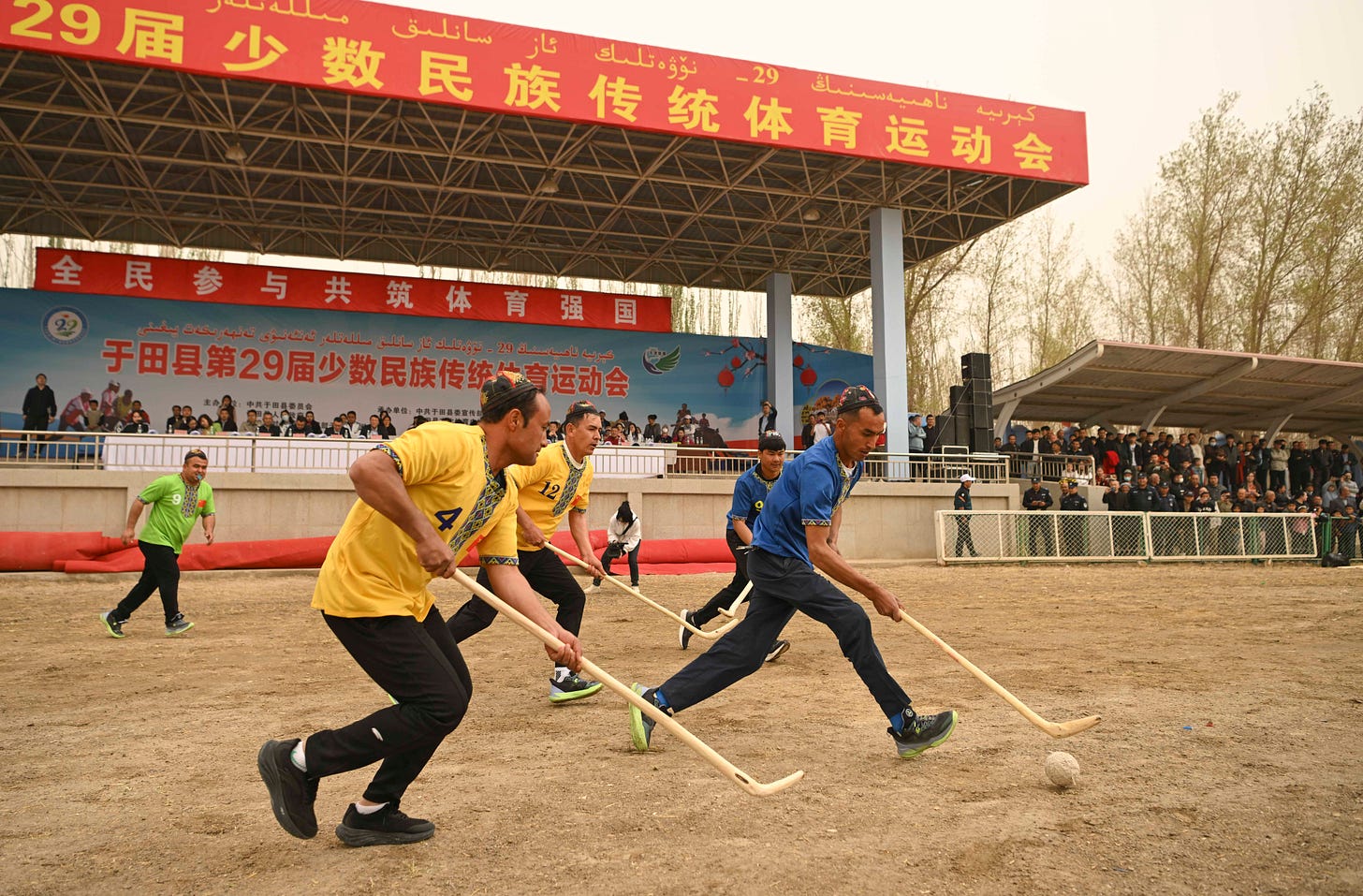
Yutian County, located in the southern part of the Taklamakan Desert in Xinjiang, China, is a region rich in cultural diversity and tradition. The 29th Yutian County Sports Festival, held from 12 April to 14 April 2025, saw villagers from various ethnic groups, including the Uyghur, Han, and Kazakh peoples, participating in events such as camel racing, horse racing, and the unique wheat hot ball game. Originally focused on athletic competitions, the festival has evolved into a vibrant celebration of local culture, offering a platform to showcase traditional customs, promote regional tourism, and highlight local agricultural products. This year’s event attracted nearly a thousand participants and tens of thousands of spectators.
Photo Credit: Xinhua News Agency, Hu Huhu, 12 April 2025


